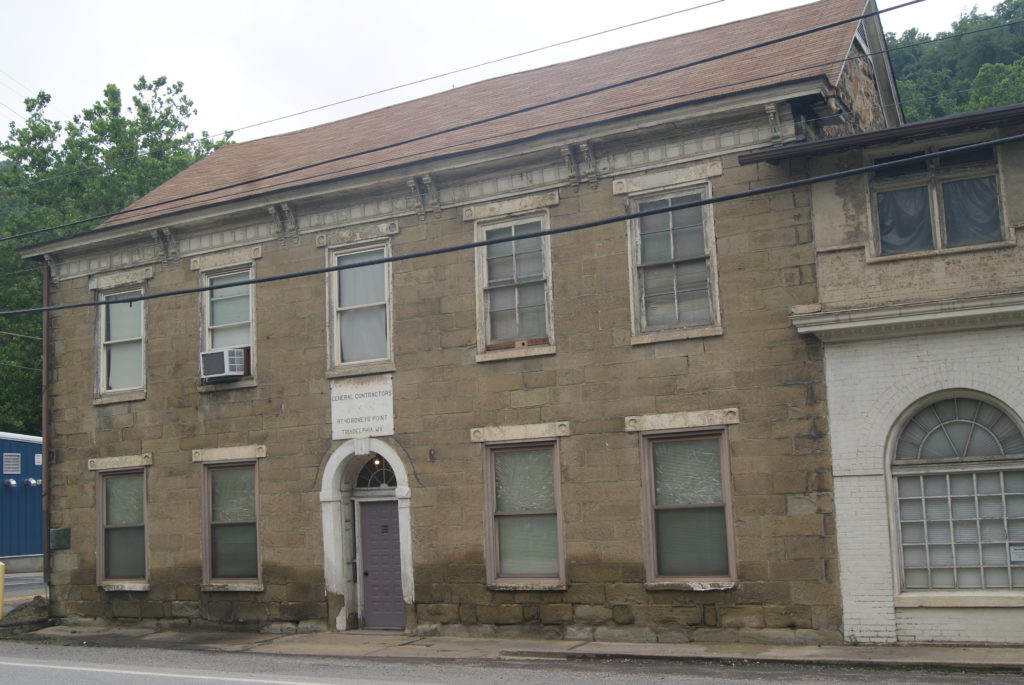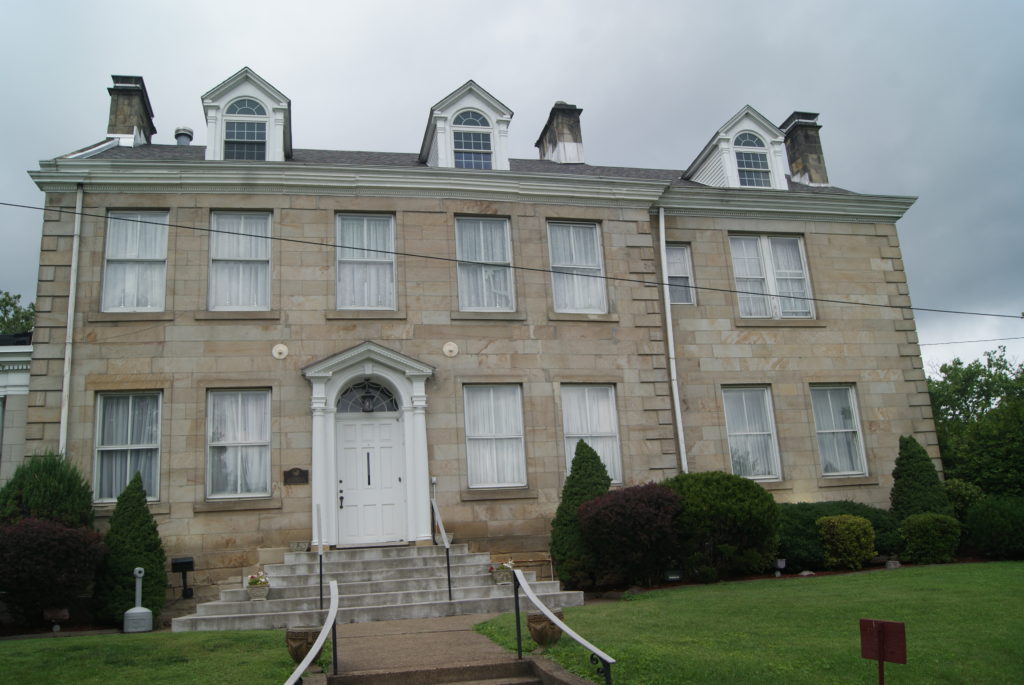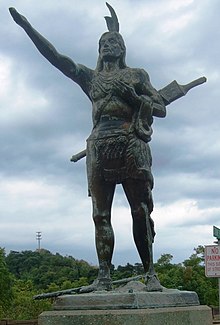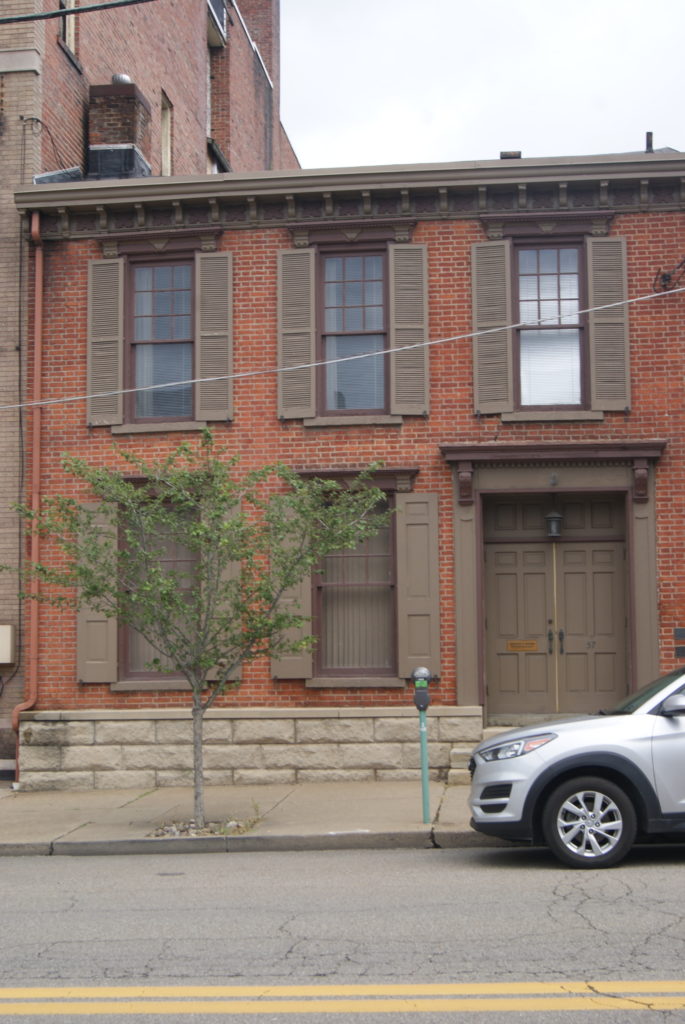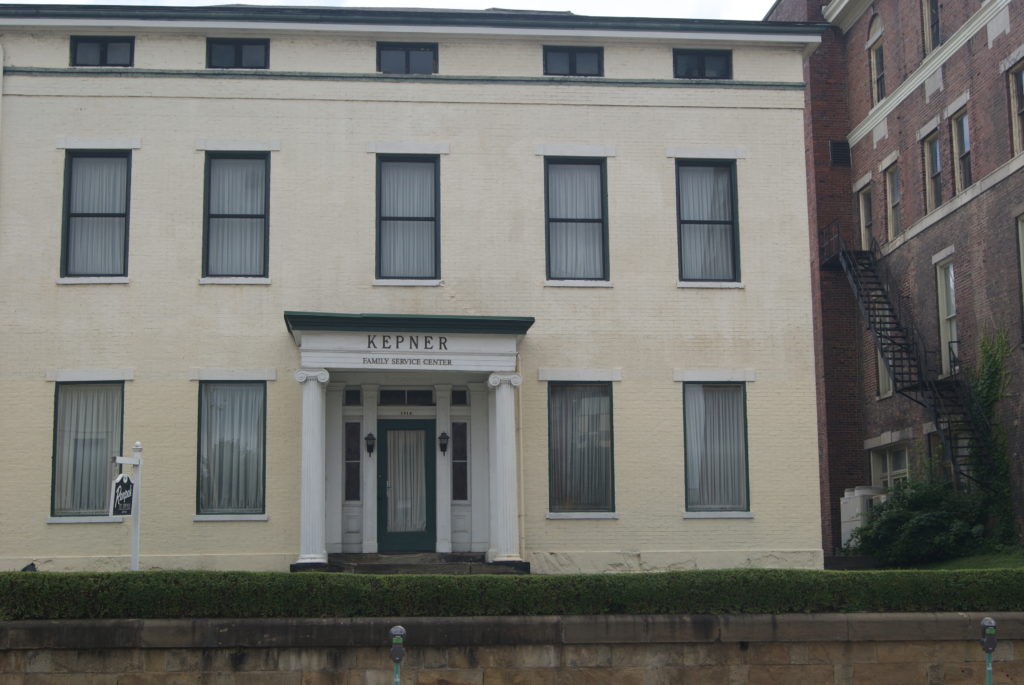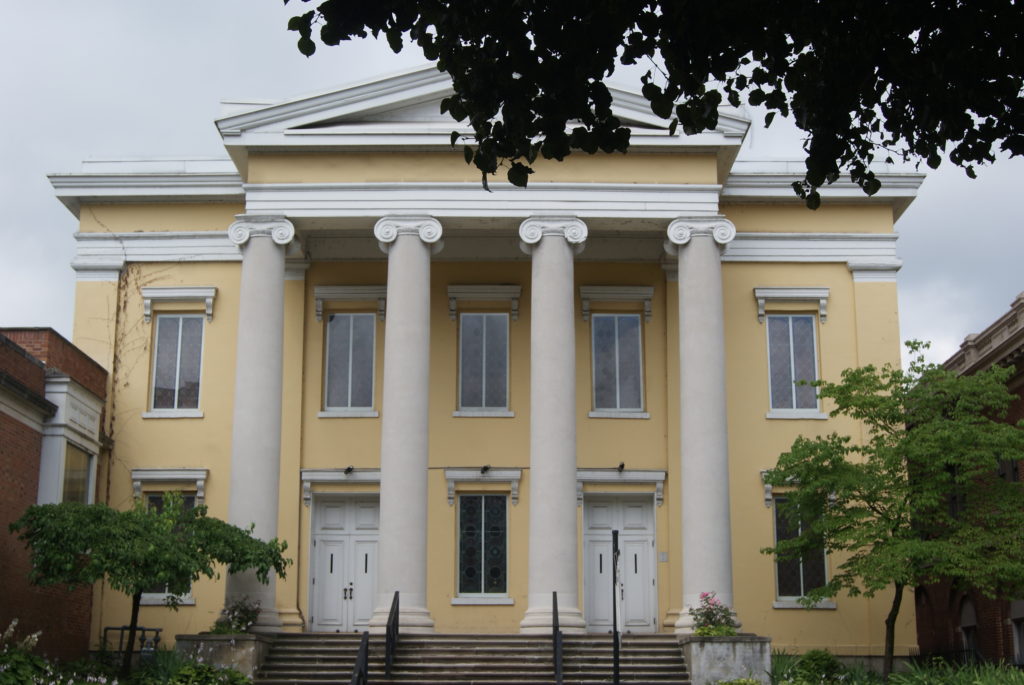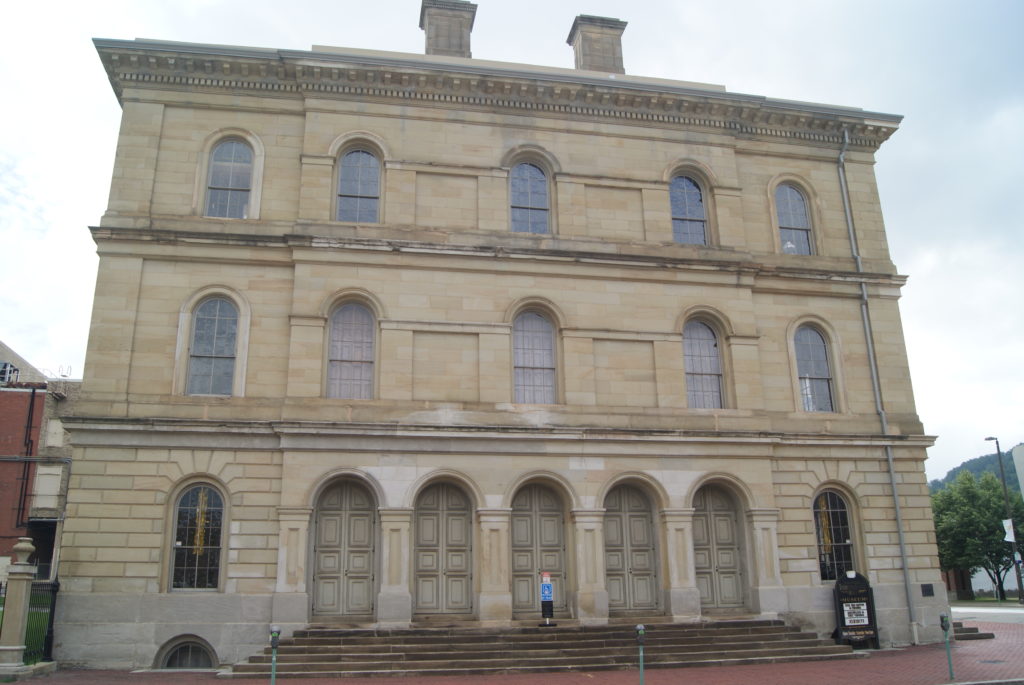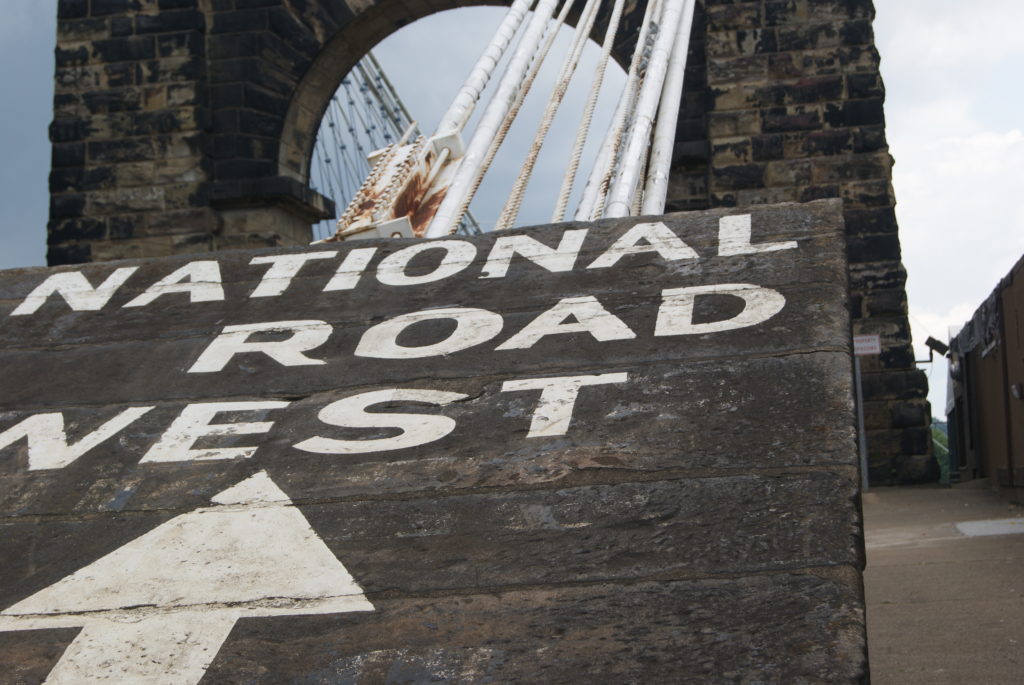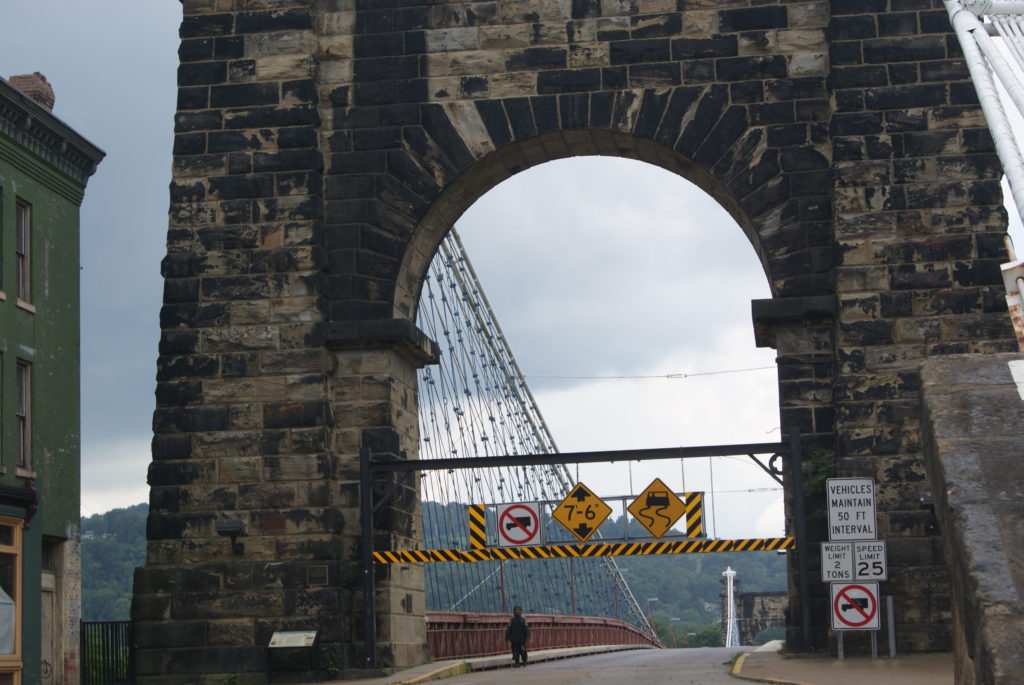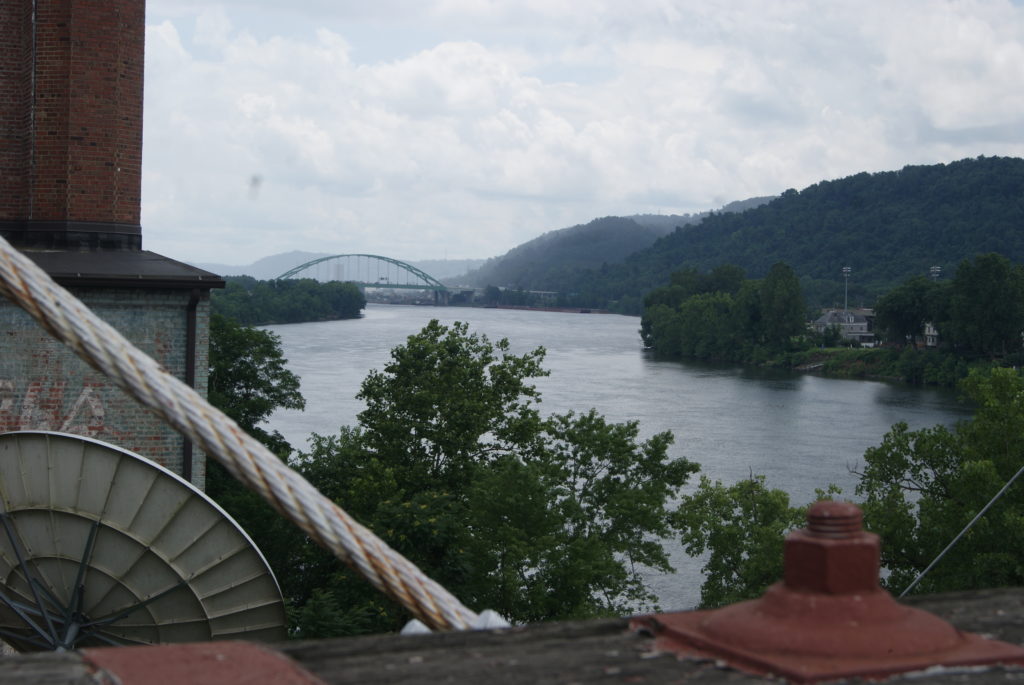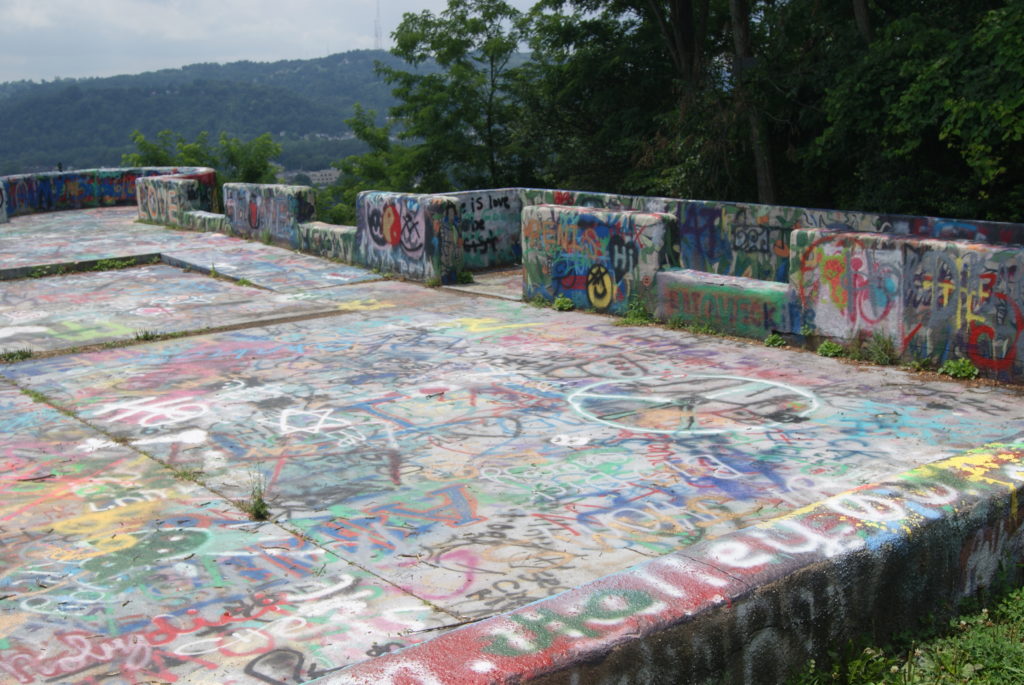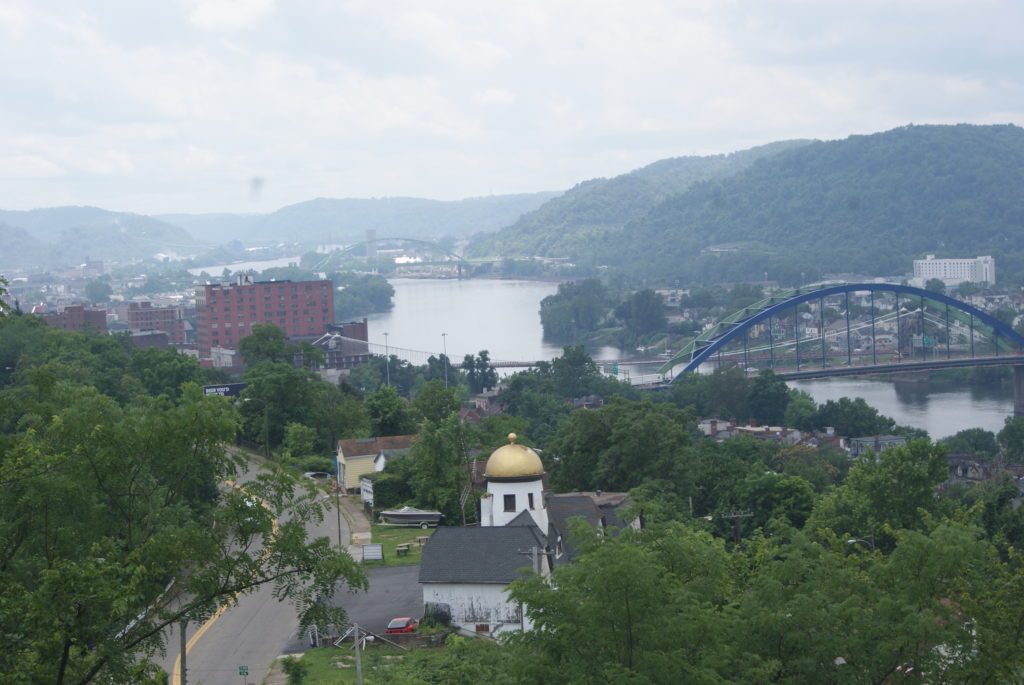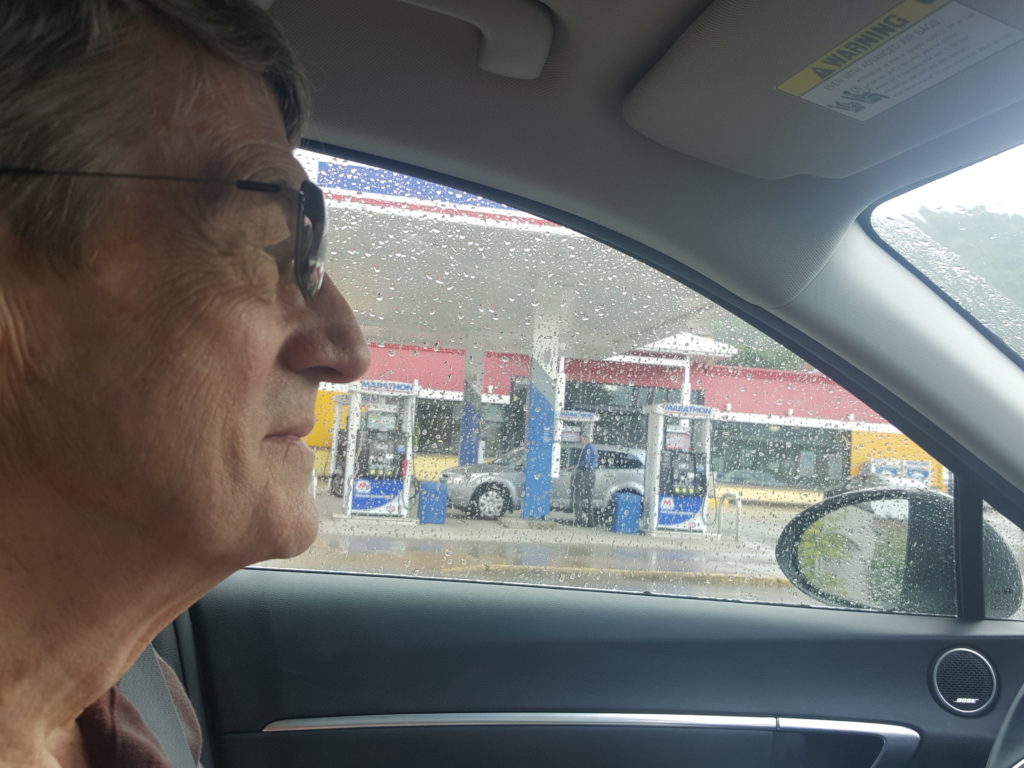One of the most delightful aspects of the drives that Al and I take for my blog posts is meeting people who love their home town and are eager to talk about it. We’ve met that kind of person in almost every small town that we’ve visited, including on our recent trip to a much bigger town: Wheeling, West Virginia.
The lady above is Lydia Boggs Shepherd, an early example of a West Virginia lady who loved her home town and had the right friends. The National Road wouldn’t have gone through Wheeling without her.
Heimberger House
Al and I very much enjoyed our travels on the Maryland and Pennsylvania portions of the National Road. So,we recently decided to continue, moving west. First stop on the National Road in West Virginia: the Heimberger House.
Also known as the Old Stone Tavern, this federal-style tavern and inn was built in he 1820s, very shortly after the National Road reached West Virginia in 1818. The small town where the tavern stands is named Roney’s Point, after the original landowner.
Ninian Bell originally owned the Old Stone Tavern, and James Beck succeeded him in 1828. Subsequent owners included Mrs. Sarah Beck, Moses Thornburg and Jacob Beck (not a relative of the original Becks). August Heimberger ran the hotel from 1869 until about 1892. Stage lines stopping at the tavern over the years included the Simms line and the Good Intent line. A construction company appears to currently occupy the building.
After the Heimberger House, we drove through several miles of heartbreaking rural poverty: abandoned houses, trailers and cars, rusted trailer homes, houses with peeling paint or mildewed siding. Front porches that looked like flea markets, jumbled with rusty bicycles, faded plastic toys, sprung sofas and plastic garbage bags with indeterminate contents. I hate to perpetuate a cliché, but this stretch of the National Road in West Virginia is really, really sad.
Shepherd Hall
The view improved as we approached Wheeling. The Wheeling suburb of Elm Grove is a bit scruffy around the edges in places. But it boasts a magnificent Presbyterian Church which appears to be thriving and very active in the community, as well as Shepherd Hall, now known as Monument Place.
The Hall currently serves as a headquarters for the Masons, but in the early nineteenth century Moses Shepherd and his wife, Lydia Boggs Shepherd, lived there. See her picture above.
In the eighteenth century, Moses Shepherd’s father David had settled in the area, along Wheeling Creek, a tributary of the Ohio River. Local Indians burned David’s original home, which he called Fort Shepherd. Moses inherited the land upon his father’s death in 1795 and built Shepherd Hall at its current location in 1798. Moses and Lydia’s plantation and grist mill prospered. The couple became quite influential and had friends in Washington, DC, including Kentucky Representative Henry Clay. Their friendship with Clay was instrumental in diverting the National Road to go through Wheeling and pass right by the Shepherd home. Moses died in a cholera epidemic in 1832. Lydia remarried and lived at Shepherd Hall until her death in 1867, at the age of 101.
Another Madonna of the Trail stands near Shepherd Hall. We learned that twelve of these statutes, all identical, line the National Road and other migration routes in the west, from Maryland to California.
How friendly is this Indian really?
Next, we stopped at the Mingo Indian statue at the top of Wheeling Hill. Considering that the Indians were incensed enough about something to burn Fort Shepherd, one wonders if they really felt as friendly as this portrayal indicates. The inscription on the plinth reads “THE MINGO Original Inhabitant of this Valley Extends GREETINGS and PEACE to all Wayfarers.”
Wheeling’s Historic District
The historic district in north Wheeling encompasses a mixed bag of nineteenth century buildings. Some slump in a state of decrepitude. But many have been lovingly restored to magnificence. West Virginia Independence Hall also stands in the historic district, at 1528 Market Street. Built in 1860 at a cost of about $97,000, it served the federal government as a custom house, post office and courthouse. The building is famous as the home of the Wheeling Convention and the West Virginia Constitutional Convention, turning points in the separation of West Virginia from Virginia in the Civil War. It served as West Virginia’s seat of government from 1861 until 1863. Today, the building houses a museum of West Virginia history, but it was closed when we visited.
The National Road to Wheeling was completed in 1818. But, until 1849, passengers were ferried across the Ohio River for the next leg of their journey. The bridge that changed that is still a highlight of the historic district. The Wheeling Suspension Bridge was the subject of legal controversies that went all the way to the Supreme Court. When finally completed, it was the first bridge to span a major river west of the Appalachians, and the world’s largest suspension bridge from 1849 to 1851. It still stands today. It is closed to vehicular traffic, but foot traffic is still allowed.
See below for some photos of the bridge and some of Wheeling’s historic buildings.
Centre Market District and Beyond
The highlight of Wheeling for us, though, was the Centre Market district. Only a few blocks long, the district includes the repurposed 1853 market building and original train station. Independently-owned restaurants and small shops line the street.
We had a wonderful lunch at The Market Café, and I bought a T-shirt at Ziklag and a candle at VC Wares. We also enjoyed Redecorate Consignment, for its high-quality furniture and friendly clerk.
Jenny, our waitress at The Market Café, suggested one last stop to us. She said that we must see The Lookout. The Lookout is the remains of an unfinished mansion. The owner intended it for his beloved wife, and lost the heart to finish it when she died. The remains have been spray-painted by graffiti artists (some of them pretty lewd), and the location is a hangout and party site. But the view rivals Pittsburgh’s Mt. Washington overlooks. You can see the whole city of Wheeling laid out below you, and the Ohio River winding its way southwest towards Kentucky. We met a couple of friendly teenage skateboard types who urged us to drive on to Folansbee and see Steubenville from the Folansbee lookout, which they claimed was ever better. We didn’t have time that day, but we will make a point of visiting Folansbee on a future trip.
Worst thing about West Virginia: the rural poverty is sadly obvious. Best thing about West Virginia: the people are super-friendly and love their home state. Also: JUST as we got into our car to head back home, the rain that had threatened all day finally burst forth. Even the weather in West Virginia is friendly.
Sources
http://nationalroadpa.org/maps-attractions/west-virginia/
Heimburger House: https://www.hmdb.org/m.asp?m=66677
Shepherd Hall: https://www.waymarking.com/waymarks/WMKCT6_Shepherd_Hall_Wheeling_West_Virginia
https://en.wikipedia.org/wiki/Shepherd_Hall
Suspension bridge: https://en.wikipedia.org/wiki/Wheeling_Suspension_Bridge
https://www.ohiocountylibrary.org/wheeling-history/3304
Thomas Paull house: https://www.waymarking.com/waymarks/wmJD66_Thomas_Paull_House_Wheeling_Historic_District_Wheeling_West_Virginia
George Paull house: https://www.waymarking.com/waymarks/wmJDBD_Thomas_Paull_George_Paull_House_Wheeling_Historic_District_Wheeling_West_Virginia
First Presby church: https://www.ohiocountylibrary.org/wheeling-history/5337
Independence Hall: https://en.wikipedia.org/wiki/West_Virginia_Independence_Hall


